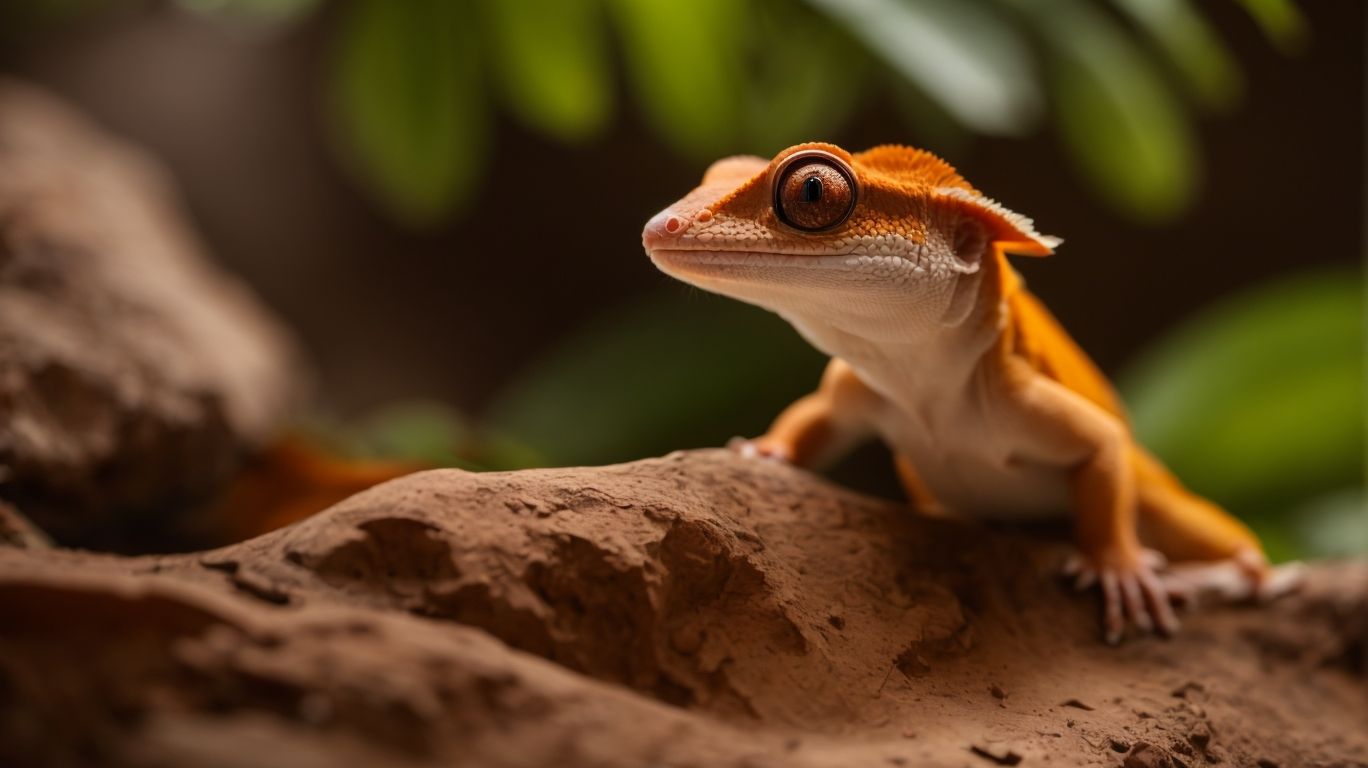
The Fascinating World of Albino Leopard Geckos
Table of Contents
The Wondrous Charm of Albino Leopard Geckos
The wondrous charm of albino leopard geckos is undeniable. These stunning creatures captivate reptile enthusiasts with their unique appearance and captivating personality. The albino leopard gecko is a color morph of the common leopard gecko, distinguished by its lack of melanin, resulting in a beautiful white or yellowish coloration without the characteristic spotted pattern found in its non-albino counterparts.
One of the most fascinating aspects of albino leopard geckos is their striking appearance. The combination of their white and yellow scales creates a mesmerizing contrast that is sure to catch the eye of anyone who sees them. Their vibrant colors and lack of spots give them an ethereal and otherworldly look that is simply mesmerizing.
Another unique attribute of the albino leopard gecko is its captivating eyes. These geckos have bright red or pink eyes, which adds to their mesmerizing appearance. The lack of pigment in their eyes creates an otherworldly effect and makes them truly stand out.
Additionally, albino leopard geckos have a more delicate skin compared to their non-albino counterparts. Their skin can be more sensitive to harsh handling or rough surfaces, so it’s important to handle them with care.
One interesting attribute of these geckos is their ability to shed their tail as a defense mechanism. If they feel threatened or are caught by their tail, they can detach it, allowing them to escape from potential predators. The tail will then grow back over time, but it may not be as vibrant in color or as long as the original.
Overall, the unique attributes of albino leopard geckos, including their striking coloration, captivating eyes, and tail shedding ability, make them truly fascinating creatures to observe and care for.
Understanding the Genetics Behind Albino Leopard Geckos
Understanding the genetics behind albino leopard geckos is key to unraveling the mystery of their unique coloration. These captivating creatures are the result of a genetic mutation that affects the production of melanin, the pigment responsible for the typical spotted pattern found in leopard geckos.
The albino gecko leopard lacks the ability to produce melanin due to a recessive gene. This gene causes a complete absence of pigmentation, resulting in the stunning white and yellow coloration that sets them apart from their spotted counterparts.
In order for an albino gecko leopard to be born, both parents must carry the recessive gene for albinism. This means that even if only one parent is albino, there is still a chance that some offspring will inherit the albino trait. It’s important for breeders and enthusiasts to understand the genetic inheritance patterns in order to selectively breed for albino gecko leopards.
While albinism may be associated with certain health issues in some animals, albino leopard geckos are generally healthy and can live long, fulfilling lives. It’s important to provide them with the proper care, nutrition, and habitat to ensure their well-being.
The Behavior and Temperament of Albino Leopard Geckos
Albino leopard geckos are not only known for their stunning appearance, but also for their fascinating behavior and engaging temperament. These unique reptiles have a charm that captivates reptile enthusiasts of all ages.
One of the most notable aspects of their behavior is their docility. Albino leopard geckos are generally calm and friendly, making them a great choice for first-time reptile owners. They are known to be easily handled and enjoy human interaction. They may even display curiosity and a willingness to explore their surroundings when they are out of their enclosure.
Albino leopard geckos are primarily nocturnal, which means they are most active during the night. They have excellent night vision and rely on their acute sense of smell and vibration detection to navigate their environment. Watching them hunt for their food can be a fascinating sight, as they use their lightning-fast reflexes to catch insects.
While they are generally easy-going, it’s important to note that albino leopard geckos can be territorial. They may exhibit aggression towards other geckos if they are housed together. It is recommended to keep them in separate enclosures to prevent any potential conflicts.
Decoding the Habitat Needs for Albino Leopard Geckos
Creating the perfect habitat for your albino leopard gecko is crucial to ensuring their health and well-being. These unique reptiles have specific habitat needs that must be met to ensure they thrive in captivity.
When it comes to the enclosure, size is important. Albino leopard geckos need a spacious habitat that allows them to move around comfortably. A 20-gallon tank is generally recommended for a single gecko, but larger tanks are always better if space allows. It’s important to provide plenty of hiding spots for your gecko, such as caves, branches, or plants. This will give them a sense of security and allow them to feel safe.
Temperature and lighting are also important considerations for your albino leopard gecko’s habitat. Geckos require a temperature gradient within their enclosure, with a warm side and a cool side. The warm side should range from 88-92 degrees Fahrenheit, while the cool side should be around 75-80 degrees Fahrenheit. Providing a heat mat or heat lamp on one side of the tank can help maintain these temperature ranges. Additionally, albino leopard geckos do not require UVB lighting, as they are nocturnal animals. However, providing a low-wattage light bulb on the cool side of the tank can help simulate natural lighting cycles.
Humidity is another factor to consider for your gecko’s habitat. Albino leopard geckos require a relatively low humidity level, ranging from 20-40%. Excessive humidity can lead to respiratory problems, so it’s important to monitor the humidity levels in the enclosure. This can be done using a hygrometer.
Substrate choice is also important for the habitat of your albino leopard gecko. Avoid using loose substrates like sand or bark, as they can be ingested and cause impaction. Paper towels or reptile carpet are safer options that are easy to clean and maintain.
Dietary Requirements and Nutrition for Albino Leopard Geckos
Nutrition plays a crucial role in the overall health and well-being of your albino leopard gecko. Providing a well-balanced diet is essential to ensure they receive the necessary nutrients for growth and development.
Albino leopard geckos are insectivores, which means their diet should primarily consist of small insects. The main staples of their diet include crickets, mealworms, and waxworms. These can be easily obtained from pet stores or bred at home. It’s important to ensure the insects are properly gut-loaded before feeding them to your gecko. This means feeding the insects a nutritious diet to ensure they pass on those nutrients to your gecko.
In addition to insects, you can also offer your albino leopard gecko occasional treats such as small pieces of fruit or vegetables. However, these should only make up a small portion of their diet. It’s important to avoid feeding them insects caught in the wild, as they may contain pesticides or parasites that can harm your gecko.
To ensure your gecko receives the necessary vitamins and minerals, it’s recommended to dust their food with a calcium supplement. Calcium is important for their bone health and can help prevent the development of metabolic bone disease.
Water should always be available to your albino leopard gecko. They may obtain moisture from the insects they eat, but providing a shallow dish of clean, fresh water is essential. It’s important to change the water daily to prevent the buildup of bacteria.
Monitoring your gecko’s weight is important to ensure they are receiving adequate nutrition. A healthy gecko should have a plump tail and a well-rounded body. If you notice any changes in their appetite, weight loss, or signs of illness, it’s important to consult a reptile veterinarian for guidance.
Addressing Common Health Issues and Solutions for Albino Leopard Geckos
Albino leopard geckos are generally healthy creatures, but they can still experience some health issues that require attention and care. Being aware of these common health problems and knowing how to fix them is essential for keeping your albino leopard gecko happy and thriving.
One common health issue that albino leopard geckos may face is shedding problems. Shedding is a natural process for reptiles, but sometimes geckos can struggle to shed their skin properly. This can result in retained shed or incomplete shedding, which can lead to complications if not addressed. To fix this issue, you can create a humid hide in your gecko’s enclosure. This can be as simple as a small container with a damp paper towel or moss inside. The humidity in the hide will help soften the old skin, making it easier for your gecko to shed.
Another health problem that may arise is calcium deficiency. Calcium is crucial for the healthy development of your gecko’s bones and overall well-being. A lack of calcium can lead to metabolic bone disease, which can cause deformities and weak bones. To fix this issue, you can provide your gecko with a calcium supplement. Dusting their food with calcium powder or offering them calcium-rich food items like calcium-fortified insects can help ensure they are getting enough of this vital nutrient.
Respiratory infections can also occur in albino leopard geckos. Symptoms of a respiratory infection may include wheezing, coughing, nasal discharge, or open-mouth breathing. If you notice any of these signs, it’s important to seek veterinary care for your gecko. The vet can prescribe appropriate medications, such as antibiotics, to treat the infection and help your gecko recover.
Concluding Thoughts: Albino Leopard Geckos As Pets
Albino leopard geckos make wonderful pets for reptile enthusiasts of all ages. Their stunning appearance, captivating personality, and unique characteristics make them a joy to care for and observe. Whether you’re a seasoned reptile owner or new to the world of leopard geckos, these enchanting creatures will bring a unique charm to your life.
As pets, albino leopard geckos are known for their docile and friendly nature. They are relatively easy to handle and enjoy human interaction. Watching them explore their surroundings with curiosity and playfulness can be a truly rewarding experience.
Taking care of an albino leopard gecko requires attention to their specific needs. Providing a spacious enclosure with plenty of hiding spots, maintaining proper temperature and lighting, and offering a balanced diet are essential for their well-being. Regular veterinary check-ups and proper hygiene practices are also important to ensure they remain healthy.
Related Posts

Incubating Crested Gecko Eggs: Essential Techniques and Tips
Crested geckos are fascinating reptiles that are known for their…

Red Crested Gecko Health: Common Issues and Preventive Care
Are you a proud owner of a red crested gecko?…

Creating the Ideal Environment for Your Red Crested Gecko
Do you own a red crested gecko or are you…

No Comments